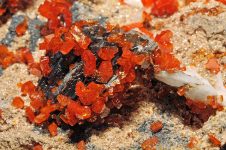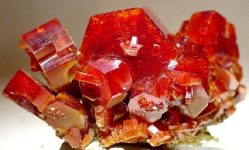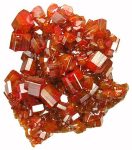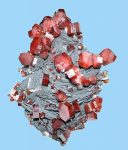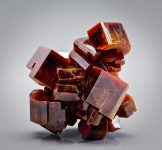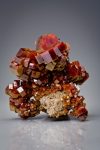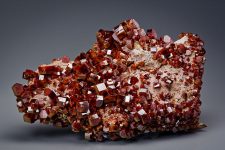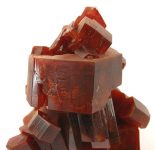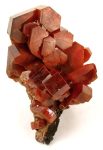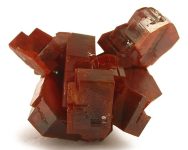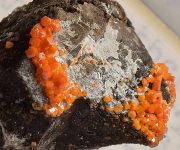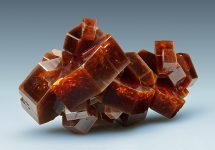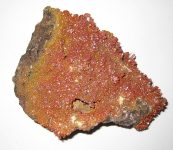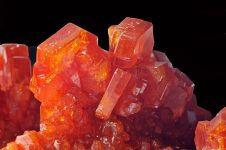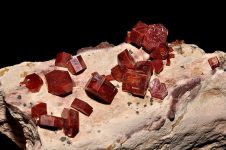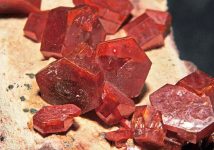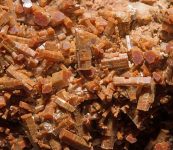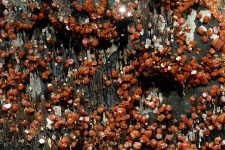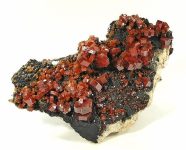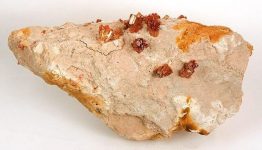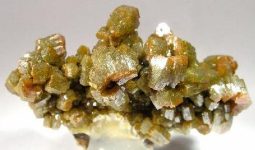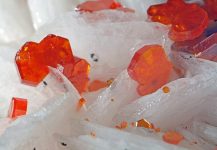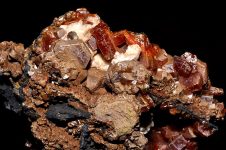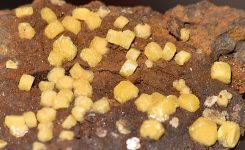Vanadinite
ABOUT VANADINITE
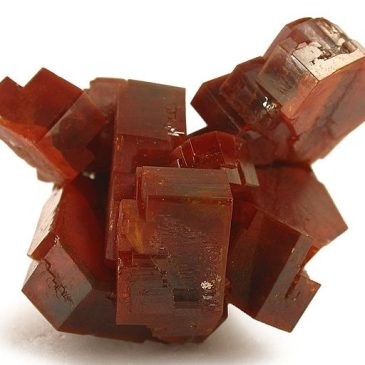
About:Vanadinite is a striking red to orange mineral known for its vibrant color and unique crystal formations. As a member of the apatite group of phosphates, it is a primary ore of vanadium and a minor source of lead. This guide provides an in-depth look at vanadinite’s characteristics, history, sources, uses, and significance.
Mining: Vanadinite is typically extracted through open-pit or underground mining. The extraction process involves drilling, blasting, and removing the ore, which is then transported to processing facilities.
Processing: Extracted vanadinite is cleaned and sometimes cut or polished to enhance its natural beauty. For industrial use, vanadinite is processed to extract vanadium and lead.
CHARACTERISTICS
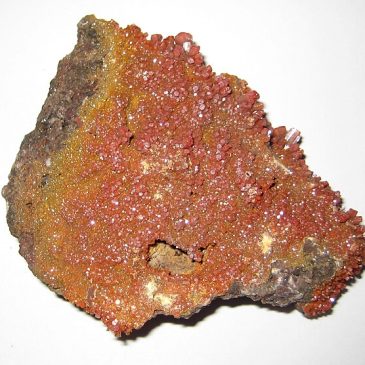
Color: Vanadinite ranges from bright red to orange, yellow, and brown. The most prized specimens are those with intense red hues.
Chemical Composition: Vanadinite has the chemical formula Pb₅(VO₄)₃Cl. It is composed of lead, vanadium, oxygen, and chlorine.
Density: Vanadinite has a density of about 6.8-7.1 g/cm³, making it quite dense.
Crystal Structure: Vanadinite crystallizes in the hexagonal system, often forming prismatic or barrel-shaped crystals. It can also occur in tabular and fibrous forms.
Luster: Vanadinite exhibits an adamantine to resinous luster, giving it a shiny and reflective appearance.
Hardness: Vanadinite has a Mohs hardness of 3 to 4, making it relatively soft and easily scratched.
Transparency: Vanadinite crystals are typically translucent to opaque, though thin crystals can be more transparent.
HISTORY AND LORE
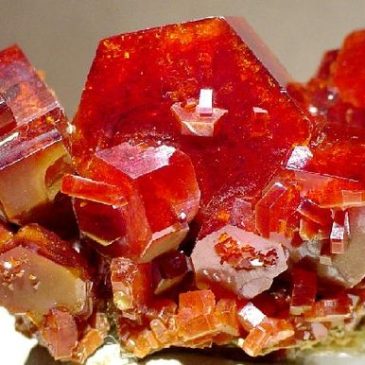
Discovery: Vanadinite was first described in 1801 by the Spanish mineralogist Andrés Manuel del Río. It was initially mistaken for a variant of chromium but was later recognized as a distinct mineral due to its vanadium content.
Historical Uses: Historically, vanadinite has been mined primarily for its vanadium content, which is used in steel alloys and other industrial applications. Its lead content also made it a minor ore of lead.
Modern Era: Today, vanadinite is highly valued by mineral collectors for its striking appearance and is often showcased in museums and private collections.
SOURCES
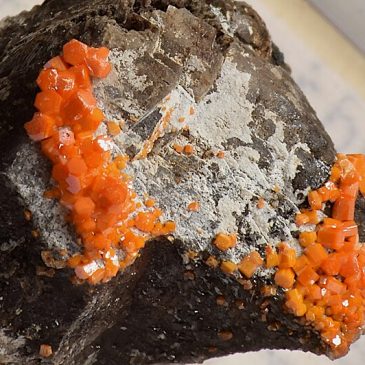
Geographical Locations: Major sources of vanadinite include Morocco, the United States (particularly Arizona), Mexico, Namibia, and South Africa. Morocco is renowned for producing some of the finest and most vibrant vanadinite specimens.
Geological Formation: Vanadinite forms in the oxidation zones of lead ore deposits, often associated with other lead minerals such as galena and wulfenite. It typically forms in arid, oxidizing environments.
USES
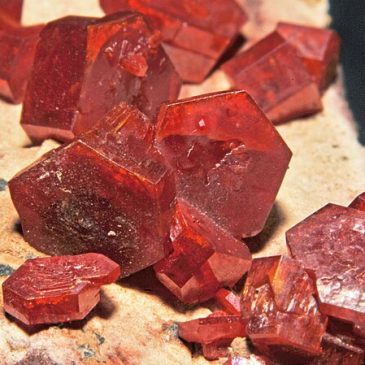
Jewelry: Although vanadinite is relatively soft and brittle, it is sometimes used in jewelry, particularly in pendants and earrings, where it is less likely to be damaged. Its vibrant color makes it a unique and eye-catching choice.
Collecting: Vanadinite is a favorite among mineral collectors due to its striking appearance and unique crystal formations. High-quality specimens from famous localities are highly prized.
Industrial Uses: Vanadinite is a primary ore of vanadium, which is used to produce high-strength steel alloys, chemicals, and batteries. Its lead content also makes it a minor ore of lead.
Metaphysical Uses: In the metaphysical realm, vanadinite is believed to have various healing properties. It is thought to promote focus, creativity, and energy. Vanadinite is also used in meditation and energy healing practices.
CULTURAL SYMBOLISM
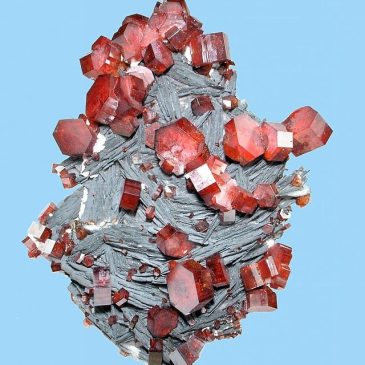
Symbol of Energy and Creativity: Vanadinite is often associated with energy, creativity, and focus. Its vibrant red color symbolizes vitality and passion.
Historical Usage: The use of vanadinite as an ore of vanadium and lead highlights its industrial significance.
